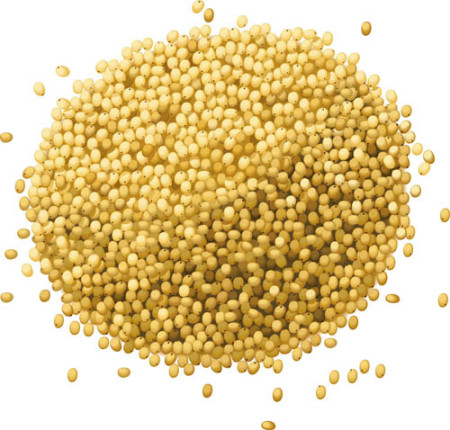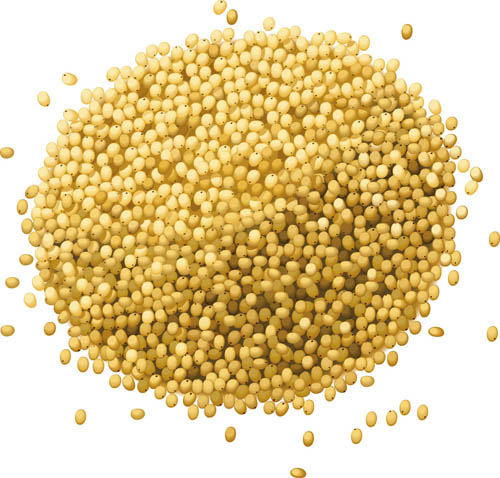Millet is a highly nutritious seed (rather than a grain) that is gluten free and packed with minerals and vitamins. It has been used for centuries in China, India, Greece, Egypt and Africa, in everything from bread to couscous, and as cereal.

Research has indicated the following key benefits of including millet in your diet:
- It acts as a probiotic to feed microflora
- It provides serotonin to calm and soothe
- It helps to hydrate the colon for more regular bowel movements
- It is a great energy source so ideal for athletes
- It is a complete protein source when combined with legumes (as in the Kitchadi recipe below) and therefore is ideal for vegetarians
- It has a high amount of fibre and digests easily
- It is has a low glycemic index so is a very suitable food for diabetics as well as for those with high cholesterol
- All millet varieties show high antioxidant activity
Below are some guidelines of how to prepare plain millet (very suitable as a rice substitute) and also a millet Kitchadi (which you may need to experiment with to get the taste and consistency you like).
Millet can be used by all Dosha but is most suitable for pacifying Pitta and Kapha.
Making plain millet (as a rice substitute)
Look for barnyard millet if available, otherwise any millet will do
Wash thoroughly
Soak for one to two hours
Put in a non stick pot or rice cooker and add two cups of water for each one cup of millet
Add a pinch of salt
Bring to boil and keep stirring, then reduce heat, cover with a tight fitting cover and let it cook over low heat for ten minutes without disturbing it
After ten minutes turn off the heat and let it rest for 10-15 minutes to cool down
Before serving use a fork to fluff up the millet so it doesn’t stick together
Millet Khichdi
Ingredients needed:
- Onion – 1 (diced)
- Green chilli -1, slit slightly
- Ginger – 2 inch piece scrape off skin, chop finely and make into a paste
- Millet – 1 cup
- Moong dhaal split yellow variety – 1/2 cup
- Turmeric powder – 1/4 tsp
- Salt as needed to taste
- Vegetables and greens (to suit your Dosha) chopped
- Water – 3 ½ cups
For the seasoning :
- Ghee – 1 Tbsp
- Mustard seeds – 1/2 tsp
- Urad dhall – 1 tsp
- Cumin seeds -1/2 tsp
- Whole black peppercorns – 10
- Dry Red chilli (whole) – 1 piece
- Asafoetida (Hing powder) – 1/4 tsp
- Curry leaves – 12 leaves
Preparation:
- Chop all the vegetables into medium sized pieces (half or three quarter cook first depending on how big the pieces are and how long they take to cook)
- Wash and soak millet and Moong dhall separately for 2 hours or overnight
- Heat ghee in a deep frying pan. When ghee is hot, add mustard seeds, when it splutters, add urad dal, cumin seeds, red chillies, Asafoetida (Hing), black pepper and curry leaves (fry quickly and be careful not to burn)
- Add chopped onions, ginger, green chillies and saute until onions turn golden brown
- Then add all the vegetables, turmeric powder, salt needed and saute for 2-3 minutes or until 3/4 cooked
- Drain the water from the millet and moong. Then add the millet and moong together into the frying pan and stir in well
- Then add the water and add salt to taste or according to Dosha and bring to the boil. Then cover fully and reduce to simmer for 10 minutes. Do not open cover in between
- After ten minutes, turn off heat and let settle for 15 minutes
- Then use a fork to fluff up the mixture and serve to eat
- This could be eaten with some Indian spiced pickles and goes well with some appalam (the South Indian version of the Pappadam) according to Dosha
Dosha Notes: For Pitta omit the chillis and don’t eat the peppercorns. For Vata use 2 Tbs of ghee

